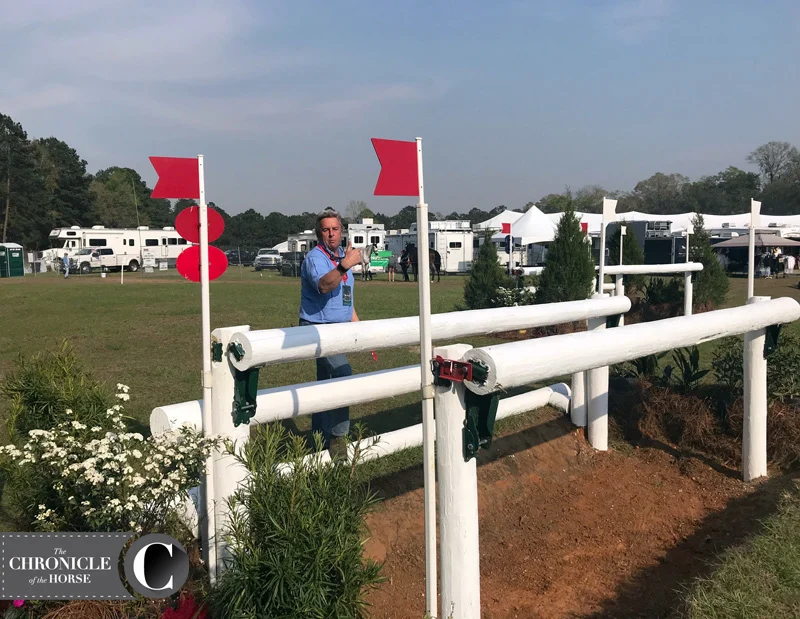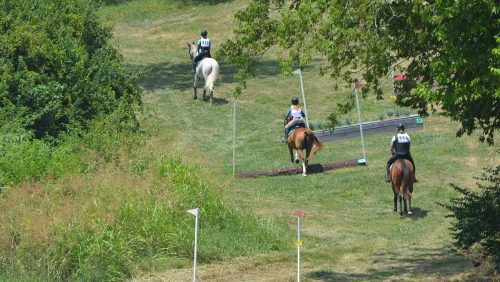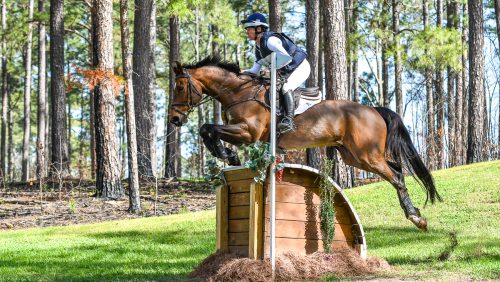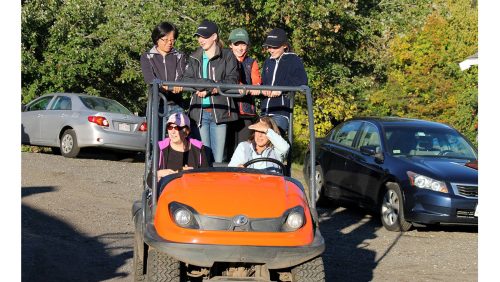Tallahassee, Fla.—March 9
The Red Hills International CIC*** cross-country course has a new look and feel this year. Course designer Mike Etherington-Smith has reversed the track and opened it up a bit by removing some trees in Elinor Klapp-Phipps Park, so he hopes it will flow better for riders. With an optimum time of 5 minutes 59 seconds, 23 numbered fences and 35 jumping efforts, there will be a lot to do.
Click here to see photos of all the jumps with commentary from Etherington-Smith.
“The course this year is on minimum distance,” said Etherington-Smith. “There’s a certain amount of real estate here, and it’s hard to break out. I have options of going a little bit longer, which I’m planning for next year’s track. Turning it around this year gives it a little bit of a different feel and flavor. It’s important to change things around from a competitor’s point of view and from the spectator’s point of view so there’s something different going on, and it’s not the same old stuff. The competitors can get too familiar with things if it goes around the same way.”
Etherington-Smith is aware that Red Hills is serving as a qualifying event for the FEI World Equestrian Games (North Carolina) in September, but that didn’t influence his design. He stills wants a confidence-boosting early season course that’s challenging but not dummied down.
“For me it’s the right level,” he said. “It’s not the most difficult class I’ve produced at this level because it’s early in the season, and all the guys will be blowing the cobwebs off. There’s one or two here trying to catch the selectors’ eyes for the World Games, which will be good for them. I’m a selector for the Australians, and form early in the season isn’t necessarily that important, but you want to see them blowing the cobwebs away. You don’t necessarily want mistakes, but get them out of the way early.”
The designer has worked with the water management team at the park to ensure he preserves the beauty of the park while making the course more horse-friendly.
“This is the fourth year I’ve done it,” he said. “I’ve opened it up quite a lot. There were basically too many trees in the way! Trees are a bit of a hazard, and one or two people have driven into trees in the past. I’ve tried to improve the flow, improve the feel and improve the balance of the track.
ADVERTISEMENT
“Risk management is the most important thing—safety and welfare of the horse and rider is the No. 1 priority,” he continued. “When you’re going through trees you’ve got to make sure you’re not making horses suspicious. For me it’s all about producing horses and riders and giving them the opportunity to show what they can do and what they’re capable of, not find out what they can’t do. I want it to be a positive experience that’s confidence-building. If they do these things well they’ll go to the bigger competitions.”
Etherington-Smith, who’s designed all over the world, said World Championships aren’t the “be-all, end-all,” so he makes sure to design events leading up to them without “breaking the horse’s heart or its head. I don’t mind too much about the riders, in the nicest possible way. My priority is to look after the horses, so if a rider makes a mistake a horse isn’t going to be punished. That’s a great theory, in reality there’s luck that goes with that. But it’s the underlying principle I always try to think about, in terms of the what-if. The rest of it is all just like a jig-saw to put together.”
When designing a course, Etherington-Smith says he asks himself what the reason or added value is to placing a jump in a certain way. He makes sure to always challenge himself and be his biggest critic, and he hopes other designers do as well.
He’s a member of the FEI Risk Management steering group, so safety is always on his mind, and he’s a big supporter of frangible technology, which is utilized throughout the courses at Red Hills.
“I think the sport is at a tipping point,” he said. “Risk management is a big thing. We’ve got to be very careful about some in certain parts of the world who are quite keen to see fences deform more easily and more quickly, and that could change the sport. If you want to change the sport, that’s fine, kick on, but we’re borderline now changing cross-country riding. It could, if we’re not careful, go down the line of setting show jumps all around the cross-country course. They wouldn’t be show jumps, but the way of riding would go that way, which would lose the essence of why people do it.
“I’m very cautious,” he added. “Safety and welfare is the No. 1 priority, and we have these [frangible] devices, so I feel we have a moral obligation to use them. But not every fence is going to knock down, it’s just not possible.”


















